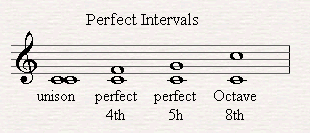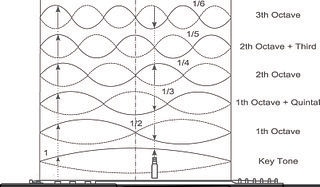(See part 1)
Cosmic creativity tends to unison in perfect harmony with the greatest frequencies. When We entrust a mission, first of all We check the degree of harmonic tension. The scale of harmony has no limits and it is also unlimited in guaranteeing the supreme fusion.
SOUND AS VALUE
When we speak of sound as an original phenomenon, we thus mean that synthesis of a material aspect, which can be expressed through number, and a psychic aspect, manifested through value, which is audible, of the corresponding sound. To study these two aspects separately, let us call the first component, the material one, “sound as number”, or simply number; and the second, the psychic one, “sound as value”, or simply sound.
In what way does one perceive sound as value? And in what relationship is it with number?
At the sight of a colour we immediately recognize it as red, or green, etc. We listen to a sound and immediately we classify it on the basis of its height or depth; the person who has a practised ear (“absolute pitch”) immediately ascertains the musical connotation: do, re, mi, etc.
We also know how to measure the wavelengths of colour and the acoustic frequency of sound in an indirect way. And here the expression in an indirect way should be noted; on seeing a colour, or hearing a sound, we are certainly able to recognize the corresponding frequenices; on the other hand, the physical methods of measurement are rather complex and are indirect.
Let us go a step further and observe two colours: a red and a blue, for example, and let us seek the relationship. This is already an aesthetic judgement: this red seems to suit that blue, or not. But one cannot speak of an objective order between different colours, in the sense of an “exactness”; nor of determining their respective wavelengths in a direct way; these can be known only through measurements, and so in an indirect way.
Everything is different, however, in the case of two sounds, for example in a relationship of a fifth (do-sol)! In fact we are immediately able to judge whether they “are in tune” or not; musical instruments can be tuned by themselves and between each other only and exactly through this faculty of hearing. Secondly – and this is decisive – with this “a priori” perception of the attunement a precise numerical proportion is established (2/3 or 1/3 in the case of the example).
The hearing is quite distinct from the other sensory modalities precisely on account of this immediate judgement of the numerical relationship.
In this singular faculty of acoustic perception something wonderful, extraordinary should be seen, which allows one to pass directly from a psychic perception to a numerical relationship or, if you wish, to a number, which is the same.
The fact that number arises in acoustic perception transforms it, so that it is no longer only a sensation, nor a mere aesthetic judgement, but a value. On this basis one can speak of sound as value.
In these paragraphs, the term Value is used in a clearly defined way. Contrary to its usage in religion, philosophy and aesthetics, where is it used in a vague sense, in the harmonic concept of value, the ideas of “harmony”, “precision” and “certainty” come together; and a psychic peculiarity is inherent in it.
Absolute pitch
By “absolute pitch” we mean the faculty of identifying or recognizing, straight away, the various musical sounds or, conversely, of emitting a note at its right height.
If this gift is precious for a musician, it is not to be taken as a proof of effective “musicality”, as many possess it who are not at all musical.
For the studies and checks by means of the monochord, this faculty can be an obstacle, because it induces one to estimate according to the musical scale used at present, which is transitory. In Harmonics exact and pure sound relationships are considered, and more subtle distinctions than those known to the tempered music of today. The person who has this faculty will do well to tune the monochord to a sound which is intermediate between two tempered sounds and to take account only of the intervals, in order to lose the habit of following the notes of the tempered scale.
***
General validity of primary intervals
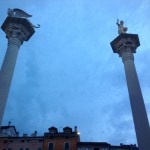 Interval means intermediate space, in music space between two sounds. Primary intervals are the octave and the fifth. Secondary intervals are the third, the tone and the semitone; tertiary the others, increasingly restricted.
Interval means intermediate space, in music space between two sounds. Primary intervals are the octave and the fifth. Secondary intervals are the third, the tone and the semitone; tertiary the others, increasingly restricted.
This is true only following the criterion of purity of acoustic perception. The hierarchy of the intervals is different if one considers them in their intrinsic quality. This hierarchy is identical with the one above in the development of tonal coordinates (T); but if one starts from the “measure” of the musician composer, then the tone must be interpreted as the standard of everything. If on the other hand one seeks to clarify the psychic meaning of Space-Time (dualistic manifestation), the predominant interval is the third.
As far as the intervals of an octave and a fifth are concerned, they are and have been recognized by all peoples, which proves their general validity.
Among the different peoples the degrees of the musical scale have been noticeably different; however, people have always agreed in using the octave as the framework, to be subdivided into the intermediate degrees. The musical scales are different, according to the musical development of the various peoples, but they all have in common the perception that the sounds are repeated by octaves.
The fifth is also universally recognized: “The affinity of the fifth, and of its opposite, the fourth, with the tonic is so great that it is evident in all known musical systems” (Helmholtz).
The bases of the present-day system of sounds are the octave and the fifth or, more precisely, the relationships of octave and fifth; in fact, one can develop a complete diatonic system using only the numbers 2 and 3.
For Harmonics it is the same: octave and fifth are the primary intervals, and it is thus necessary to emphasize right from the beginning their general validity, as without them the whole structure of Harmonics would rest on shaky supports.
MUSICAL NOTATION
The notation followed by the Latin countries is different from that in use among the Germans. The correspondence of the names and the letters for the sounds and semitones turns out to be the following:
***
The spheres vibrate and resound, and harmonies are born in Space!
EMERGING CONSIDERATIONS
It is indispensable to make a long and intense reflection on sound and number. They are two aspects of a single reality which remains hidden. At first sight they do not seem to be a couple of opposites, at least not in the “horizontal” sense of the term, not as complementary. They appear as two entities or two expressions between which a vertical hierarchy exists, like soul and body, and such that to be manifested they cannot be separated. Any number can be expressed by means of a relationship, and so of a sound. Any sound in turn can be identified by means of a number. There are no numbers without sound, nor sound without number.
It is true that a sound can descend beyond certain spheres, after which it remains unmanifest or not perceived; but to be born and to be manifested it must have a number. Thus, already at the beginning, sound and number are twins and opposites.
From these first, somewhat uncertain considerations, one deduces that sound and number are a pair of opposites, and therefore manifest aspects of a synthetic occult reality; and how can one refrain from taking them as a symbol of the relationship spirit-matter? After reaching this conclusion, it does not seem mistaken to insist on the universal value of Harmonics, but extended to any vibration of any kind, as already affirmed previously.
Some observations set out by H.K. in this paragraph of his Treatise involve a clear distinction between hearing and the other senses, sight in particular.
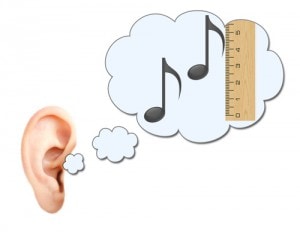 Sound and colour are contrasted in order to point out the excellence of hearing – a real mechanism of measure and relation. It is certainly so in the sphere of sensorial perceptions at this moment of human evolution. The precision with which a simple act of hearing allows one to judge a relationship is really wonderful; moreover, it is not the gift of individuals or single peoples, but a general characteristic. Nothing, however, prevents one from thinking that sight, touch or hearing can also evolve or be purified so as to be capable of an analogous function, that is the “measurement” of vibratory qualities.
Sound and colour are contrasted in order to point out the excellence of hearing – a real mechanism of measure and relation. It is certainly so in the sphere of sensorial perceptions at this moment of human evolution. The precision with which a simple act of hearing allows one to judge a relationship is really wonderful; moreover, it is not the gift of individuals or single peoples, but a general characteristic. Nothing, however, prevents one from thinking that sight, touch or hearing can also evolve or be purified so as to be capable of an analogous function, that is the “measurement” of vibratory qualities.
The fact is that one is unable to distinguish precisely, for example, between the nature of light and sound vibrations. One is unable to identify where they are different. They are vibrations, or frequencies, which a single Energy arouses or manifests in Space. But if this is true and their fundamental nature is identical, they must obey the same laws: and therefore it must be possible to see sounds and hear lights.
According to this elevation of Harmonics, it must be possible to hear, but also to see, taste and touch any vibration, and nothing stops one from thinking of other senses which have been dormant in man up till now. As has already been noted, the architect or the painter who create according to right harmonic relations, that is relations of numbers and sounds, are guided by sight, not by hearing. Unless the general meaning of “measurement” is reserved for the term “hearing” (which probably is the best thing for these times), the usual understanding seems to exclude from the field of harmonics all that is not sound; that is, to limit a universal uselessly. To signify the field of Harmonics, the concept “number plus value” thus still seems the most valid expression, because it is the most general.
In this Treatise, as is natural, sound and number have preeminence; but this leads to distinctions which must be avoided, if one wishes to study the living Harmony of Space.
The infinite and venerated Being which we call Space here (and in the whole work of H.K.) cannot be considered complementary to time. Time only exists in the material spheres and in the present-day mental conceptions of man; “on high” time does not exist. But Space yes! Or rather, the more one rises in comprehension, the more it reveals inclusive, new and divine characteristics. That which yields and falls away is not Space, but “distance”, an illusory concept, a fictitious attribute. And it is precisely Harmonics, with its laws, that by itself overtakes and destroys this false understanding. In fact it presents and studies different levels of relationships which are pure numbers, purified of any dimension: and in this lies its general validity. The action of Harmony is potent in that it eliminates very serious illusions and allows one to perceive intuitively and conceive Space as a Being capable of infinite pure relationships: in which the consciousness, instead of being isolated, communicates with the whole.
Thus time should not be understood as the complement of Space; it is, on the other hand, more rightly, the inevitable complement of the idea of distance. If one admits a separation between two points in Space, time, becoming and the concept of “finite” are invented. Now let us believe that real Space is independent of these and other errors, but contains them in itself, as it contains every thing, every thought, every life!
***
Living Harmony and its practical study are supremely important, indispensable, because they dispel the illusion of time and distance in consciousness.
This aspect, fruit or action of concordance is of a luminous nature, undoubtedly celestial. Without doubt it is what men of every age have sought and obtained from it, when they have found the idea of universal relationship.
The spirit which is stimulated by the Magnet is linked to the great activity which builds the manifest and established Universe. This accordance leads to the greatest harmony. On the other hand, the spirit which tries to cut this tie, creating a little world of its own, departs from the path which leads to the Infinite.
SOUND AS NUMBER
Consider now two experiments on the monochord. If we have reflected intensely on the content of the two last paragraphs, we can understand them well. They are equivalent in effect and significance but proceed from different premises.
***
First experiment
Let us resolve to hear an interval of an octave. Placing a bridge in any place under the string, we make it vibrate to the right and left and we move the bridge until we hear the same sound on one side and on the other; it is precisely the higher octave to the sound of the free string, or to that of any other string which is in tune with it. Let us now measure the length of the two sections of string. If we have heard well, that is if we have “balanced” the two sounds well, the respective segments are equal and so each one is equal to half (1/2) of the entire string. Thus the sound heard – the higher octave – stands to the base sound as ½ : 1 (C’ : C).
***
Second experiment
Let us seek the sound which is produced when we halve the free string, so that the relationship of the lengths is as 1 : ½. Let us divide the string with the bridge into two equal segments and let us listen to the sounds of both. They are two octaves, equal and higher, of the tonic (= sound of the free string). One reaches the same effect as with the previous experiment.
Observations
To understand clearly the principle of Harmony, it is indispensable to realize the sense and the fact of these two different experiments. The first time we passed from sound to number, the second from number to sound.
With the first experiment, having tried out a relationship of values, we established it, through a measurement, in a number. With the second, after having established a simple numerical relationship, we transformed it, by means of a vibrating string, into an experimental value.
The person who, on reflection, succeeds in perceiving the fundamental, immense difference between:
– evaluating matter (a relationship of length) on the basis of his own sensation and giving it a numerical form (first experiment),
and
– seeing a figure or psychic form (the octave), capable of living, arise immediately in his own sensation (second experiment),
understands the meaning of the principle of Harmony, as a new and promising synthesis between value and being, soul and world, “I” and nature.
***
If, for thousands of years, the spirit has been seeking the path assigned to it by the luminaries, and its essence aspires to harmony, the Magnet responds and the cosmos arrives at the best concordance. A universal chord is composed of these consonances!
EMERGING CONSIDERATIONS
The first experiment on the monochord, which goes from the value to the number, follows the direction which descends from the universal to the particular, from the Idea to its forms, from high to low. The creative acts, greatest and smallest, proceed thus in the Cosmos.
It corresponds, among human actions, to writing, that is to noting the idea with external, visible signs. It is said that the Creation is a Book.
***
The other experiment goes back from the number to the value. It corresponds to reading. The “reader” goes back from the sign to the living concept, communicates with it because it penetrates its space and transfers it, unharmed, with other signs to the consciousness of others.
***
One cannot say which of these experiments is more important. Reading or writing? They are branches of a single trunk, for which we do not have a name nor an experiment: and it is such that, if we were to name it, it would no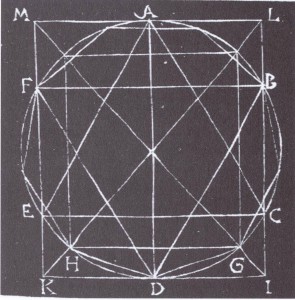 t be what we say. When one reads (and by this is meant the movement from number to value), the figure or the mark, penetrates into us through the senses in some way, where it deposits or pours out the energies which it contains – without exhausting them on this account. The quality of these energies varies from those typical of chaos and those which are daughters of Order. To represent Chaos can one write a balanced and regular form? No form, in the strict sense, is suitable for Chaos; as even the most disturbing form for disorder still always has a germ of equilibrium. Thus no form is suitable to represent perfect Order, as each one, however luminous, still has always a germ of imperfection. But men must use forms contained between these extremes of the infinite; and so they rightly reserve the regular ones for the Light and the irregular ones for the Darkness. But from these two experiments on the monochord – and from other innumerable and different ones – one gathers that the forms, when they penetrate into man through the senses, communicate energy to him and this is qualified by their qualities.
t be what we say. When one reads (and by this is meant the movement from number to value), the figure or the mark, penetrates into us through the senses in some way, where it deposits or pours out the energies which it contains – without exhausting them on this account. The quality of these energies varies from those typical of chaos and those which are daughters of Order. To represent Chaos can one write a balanced and regular form? No form, in the strict sense, is suitable for Chaos; as even the most disturbing form for disorder still always has a germ of equilibrium. Thus no form is suitable to represent perfect Order, as each one, however luminous, still has always a germ of imperfection. But men must use forms contained between these extremes of the infinite; and so they rightly reserve the regular ones for the Light and the irregular ones for the Darkness. But from these two experiments on the monochord – and from other innumerable and different ones – one gathers that the forms, when they penetrate into man through the senses, communicate energy to him and this is qualified by their qualities.
It is therefore educational to surround oneself with objects which are as perfect as possible in form: as the harmony of their external relationships is a harmony of inner values, and this impresses itself on the psyche to advantage. But all that is said of form is said of Space, without which form does not exist; and a form, if rightly considered, is only Space variously enhanced and qualified: that is, in various states of tension of Fire. Thus it is inevitable to live, like each person, in Space; but it is wise to qualify it so as to emphasize order, not only geometrical, so that the Fire fertilizes it. It is inevitable to live in oscillation, but it is wise to endeavour to set these vibrations beside the great and simple rhythms of the cosmos.
Everyone sees the sun rise and set; but few accept it as a dance, with balanced measures of time and space. Everyone knows that the direction of the North is different from the South. But few look with wisdom at the Pole star, the only motionless point in the heaven. No-one denies that we live in Space; but few recognize it as the omnipresent Mother. So harmony lives in few people: earthly man neglects his task and condemns himself and his planet. He reads only brute forms, disconnected from the Whole, that is, ugly; and he can only express analogous, corrosive forms. He does not transmute. He only reaches the level of mechanical precision. Reading nature, reading the heavens or the harmonious forms created by others are not things for modern man, who has chosen a different destiny for himself.
***
The person who is really ‘Harmonic’ opposes this tendency, which puts out the Fire of Space. “He reads” and “he writes” according to exact measurements and endeavours always to put everything into proper relation. He understands the Earth as a cosmic form which must reflect its heaven in its Space, so as to ignite superior qualities.
It is this human task which must be defined little by little in our minds, with incessant labour. A new form of man must be born. Space conceives it, as Mother, if human fire fertilizes it. Much has already been done in ancient times; great minds have collaborated in this creation. But now the New Race is about to be born, which will know how to link Heaven and Earth, as is the duty and function of Man.
He is quite rightly a cosmic being and therefore he cannot be without a cosmic destiny. But Harmonics is the law of the Universe; and man cannot ignore it without destroying himself. With simple and powerful thoughts and actions man inculcates in himself and in his space a certain degree of harmony. Otherwise studying is not worthwhile: one only adds another philosophical system to the many sterile doctrines. To limit oneself to measuring relationships without listening to their sounds; to check the surface of the forms without endeavouring to take in their energetic content; to understand harmony as an aesthetic exercise and to ignore its innate magical and constructive property are qualities which mark periods of decadence, great or modest. Now, however disastrous and chaotic the present conditions are, one can say this: that it is no longer a time of decadence. The fall (and what a fall!) has already happened. This is a time of climbing up again. It is therefore necessary to listen to sounds within; to open oneself to living harmony, as if to a divine grace; to use its potent magic with love and science.
The study of this Treatise either tends towards this, or is useless. If one does not recognize that Harmony destroys Chaos and that a harmonious form is marvellously therapeutic in this sense, what is the use of putting things in proper relation? If one fears to introduce the Infinite into life, one should stay away from Harmony, which finds it in every place.
He who seriously applies himself, in the Pythagorean sense, to Harmony, thus learns to read and write. These two operations, with all that they imply, lead him out of his prison.
***
(Excerpts from “Harmonics”, 1980 E. Savoini unpublished text –
the quotes are from Agni Yoga collection)





